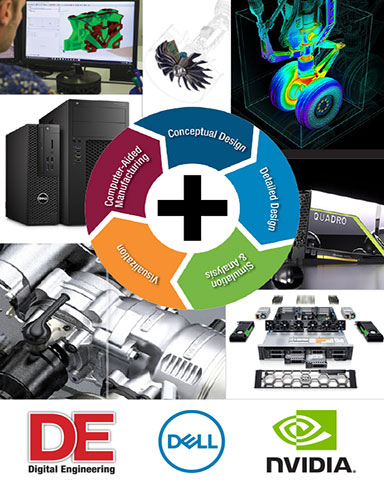
July 23, 2019
Conceptual Design
Even the napkin sketch to get initial ideas onto paper has gone digital. Designers and engineers can sketch out concepts for form, fit, function and interactivity on the screen. Digitization means those concepts can be easily stored for future use so no idea is lost, quickly shared with collaborators and, when the time is right, exported into CAD.
Conceptual design software has advanced to the point where generative design algorithms can recommend designs they may never have considered.
Detailed Design
Traditional computer-aided design (CAD) software has taken advantage of ever-increasing computing power to enable globally dispersed design engineering teams to work with larger, more complex components that comprise the interconnected mechanical, electrical and software systems of today’s products. As CAD programs have expanded to include useful initial simulation functionality, data visualization, data management, rendering features and more, workstations, servers, clusters and cloud-computing advances ensure design engineers can innovate at the speed of thought.
Simulation & Analysis
The lines separating CAD and computer-aided engineering (CAE) simulation & analysis software continue to blur, but experts employing numerical engineering simulation techniques such as structural finite element analysis (FEA), computational fluid dynamics (CFD) and multibody simulation save significant time and money that would otherwise be spent on physical testing, engineering change orders from manufacturing and even product recalls.
Predictive engineering technologies driven by advances in computing and graphics are allowing engineers to optimize product design spaces to meet specific requirements, which enables true simulation-led design.
Visualization
Simulation can predict how a product will perform under various conditions, but in today’s experience economy, the way a product looks, feels and interacts with users is just as important. Visualization software uses powerful graphics processing advances to create photorealistic renderings of the product.
Latest News







